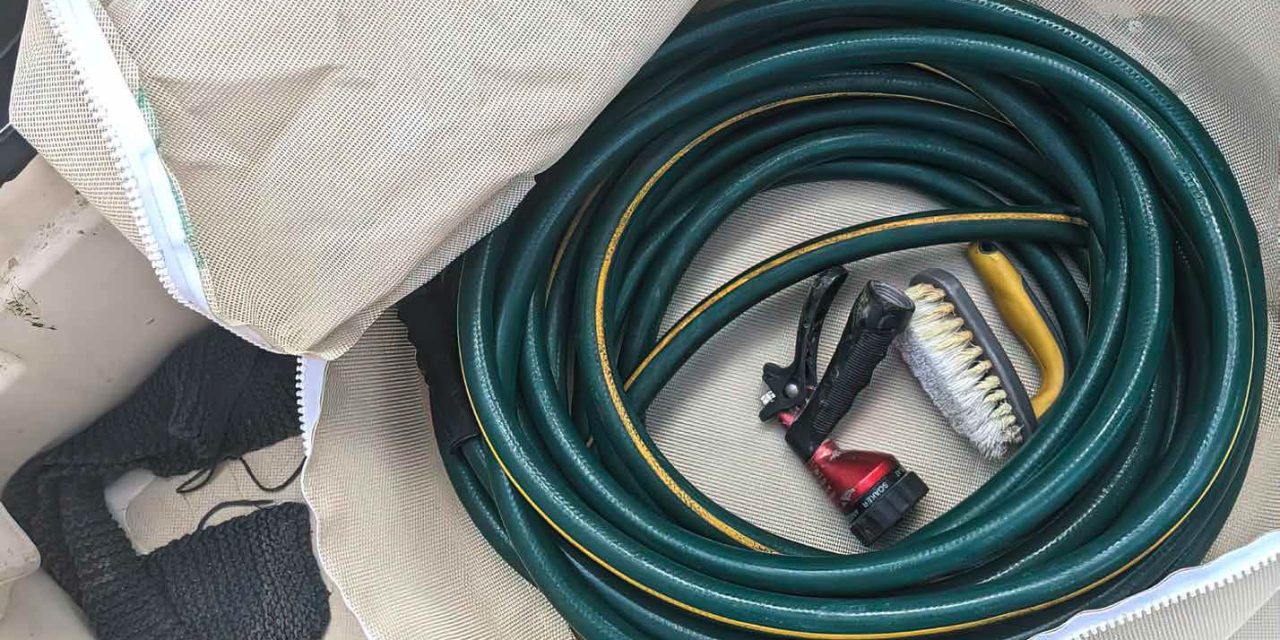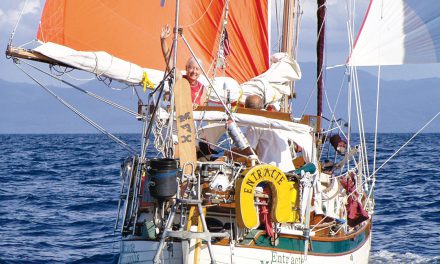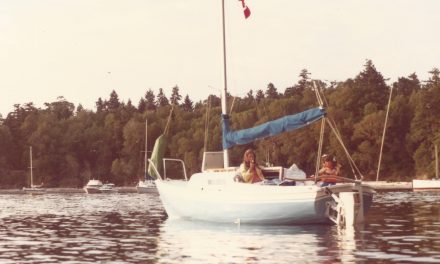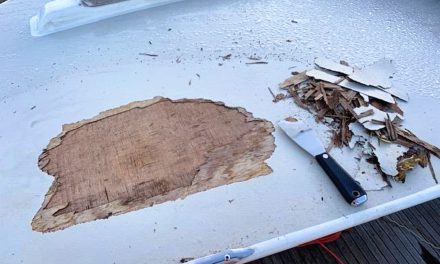Taming the lazarette mess with easy-to-make mesh bags
Issue 152: Sept/Oct 2023
Having a home base in a marina allows a sailor to spread out a bit. Lesser used items can go in a dock box or garage, dinghies park in a special space, and hoses and shorepower cords can hang near the slip. Dock steps can be modified to shelter additional things, and the store is never far away for resupplying.
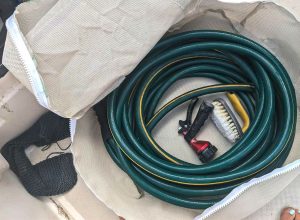
The bags provide handy storage for nozzles, brushes, and more.
When a boat makes the shift from dock life to transience, all important items need to be taken aboard and tucked away. On our Pearson 365, Azimuth, we have a technique we call “massaging things into the boat,” and it just might be a form of art. We aim to store safety-related items like storm sails, fire extinguishers, and personal flotation devices in the easiest-to-grab areas. Tools, regularly used supplies, and important spares get the next best storage areas. Spares of spares, keepsakes, and the few unused items go to the least accessible spots. When out cruising, we often shift modes between anchorages, marinas, ocean sailing, and protected waterways. Each of these conditions drastically changes which items should be on top. I enjoy the shuffle as a way to get us situated.
When we gave up our slip in Alameda, California, for a long voyage to the East Coast of the United States, our shorepower cord and freshwater hose seemed to constantly get tangled or buried, or simply be in the way. We occasionally dragged our feet on plugging in and filling up while images of wrestling with the lazarettes danced in our heads.
Inspiration hit in San Diego as we did a final round of preparation before leaving the country. I am an avid sewist and wanted to use up some of the Sunbrella and Phifertex mesh pieces squirreled away in storage under our V-berth. While we still lived in San Francisco Bay, I had received a carload of remnants when Hogin Sails moved to a new loft. Most had been gobbled up by other projects and friends, but a few quality pieces remained.
I had made small bags to manage smaller power cords in the past and decided to try my hand at a hatbox style design for these larger hoses and cords. This would keep them coiled without tying them up and make them easier to spot in our deep lazarettes.
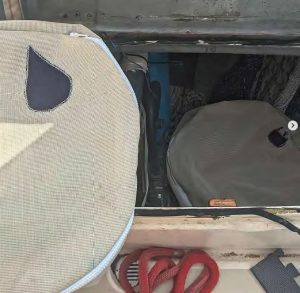
The newly made bags for water and power
cords are ready to be tucked into the large
lazarettes of the author’s Pearson 365, Azimuth.
The pattern came together fairly quickly, aided by dock space at Seaforth Marina. I laid out the hose and power cords and measured their diameter and height. I added 4 inches for seam allowance and some slack and cut out two circles and one rectangle per bag. I pulled out two leftover heavy duty plastic zippers from another project and got to sewing.
First, I seamed the short ends of the rectangle together, then sewed one side of the zipper onto the long edge. I sewed the other side of the zipper to one of the circle pieces. I recommend a zipper length of at least three-quarters of the circumference to allow the bag’s top to flop open. Next, I seamed the other circle piece to the non-zippered long edge to create the base.
Then I zipped up the bag and added a short seam to close the gap between the two zippered ends. For a finishing touch, I cut out appliqués of a water droplet and power plug from a contrasting color of Sunbrella and zigzag-stitched them to the bags to easily tell the difference.
This simple solution has served us well in countless stops along the way. Even if the hose or cord gets buried, it is still easily spotted and wrestled out of the lazarette. We also store accompanying items in the space left in the middle of the coiled hose and cord. The water droplet bag includes a hose sprayer attachment, boat soap, and rags, while the power bag holds shorepower cable adapters and an extension cord.
Ashley Gremel is a writer, maker, and problem-solver. She recently completed a sailing journey from San Francisco to the Chesapeake Bay with her husband, Scott Racette, and their salty cat, Cypress. The trio plans to settle down in Richmond, Virginia. Ashley writes weekly at cloudsformoverland.substack. com.
Thank you to Sailrite Enterprises, Inc., for providing free access to back issues of Good Old Boat through intellectual property rights. Sailrite.com

